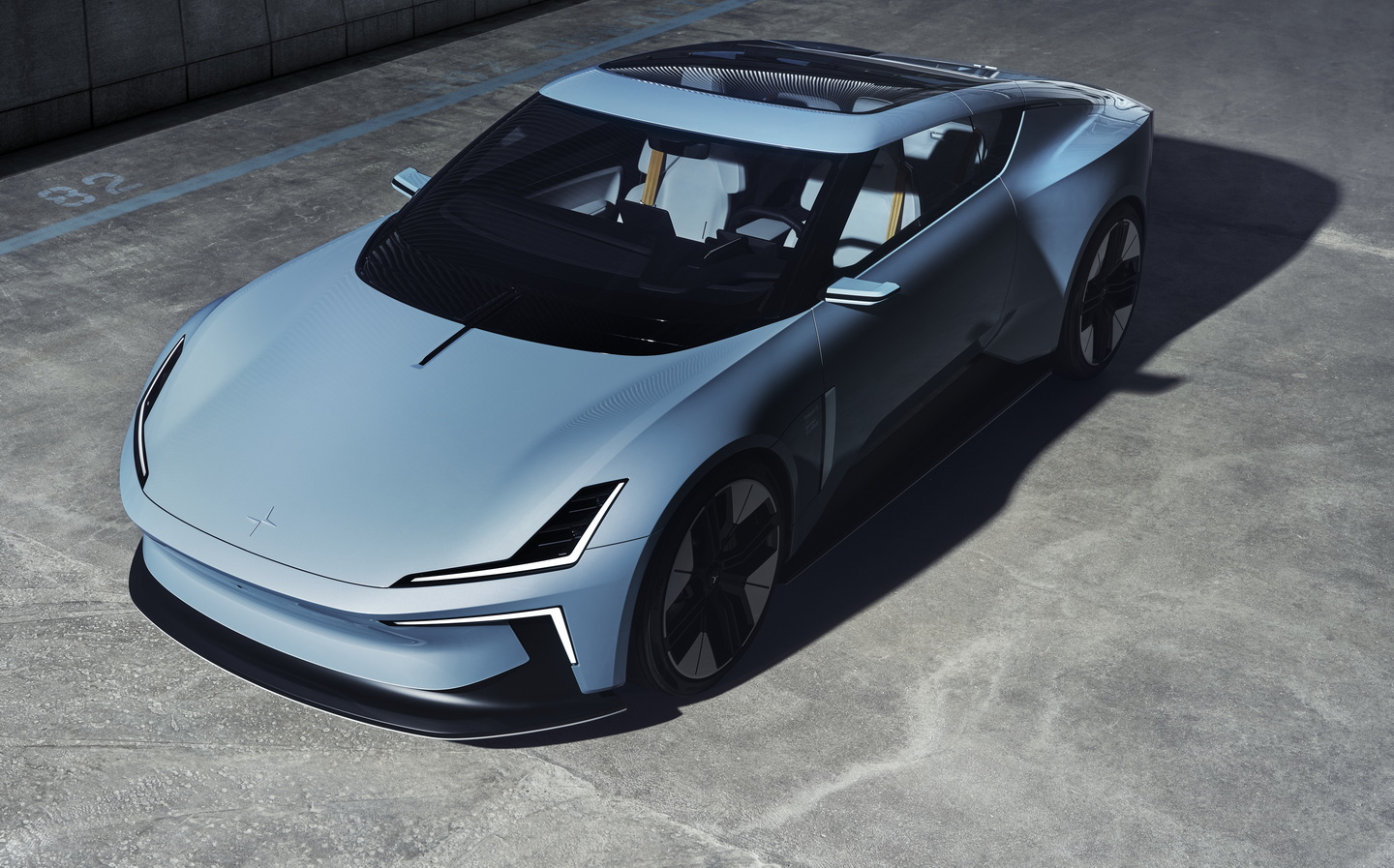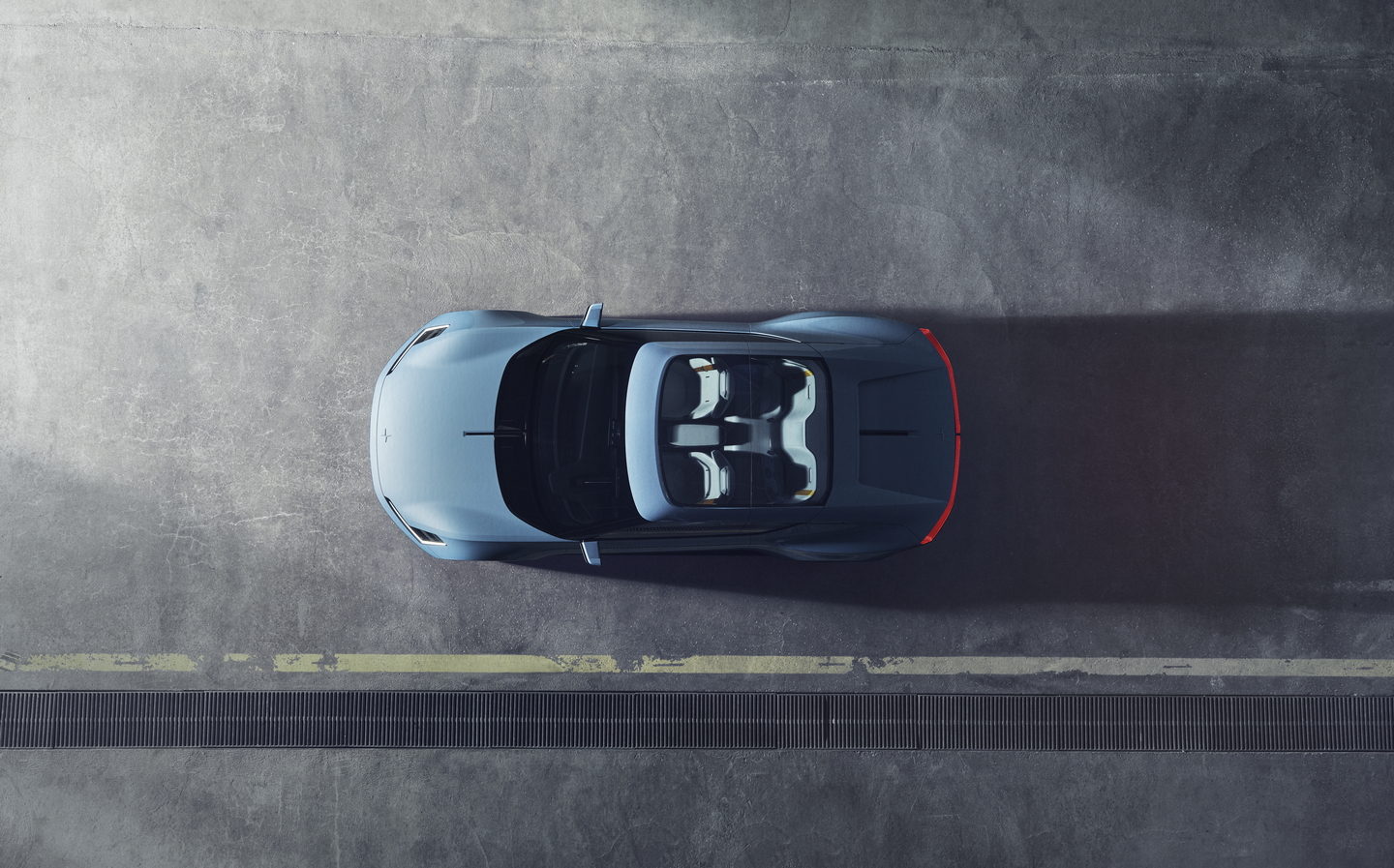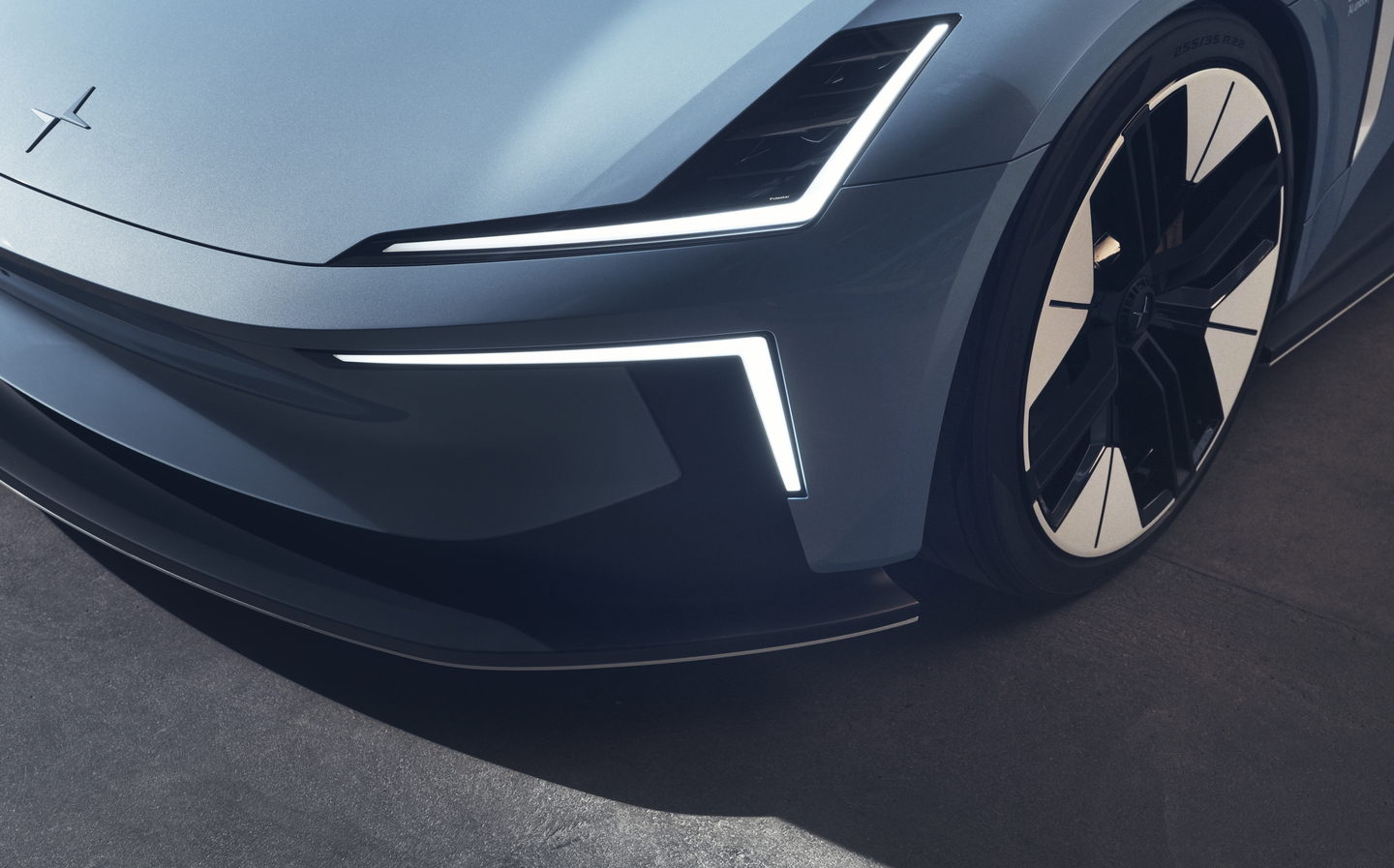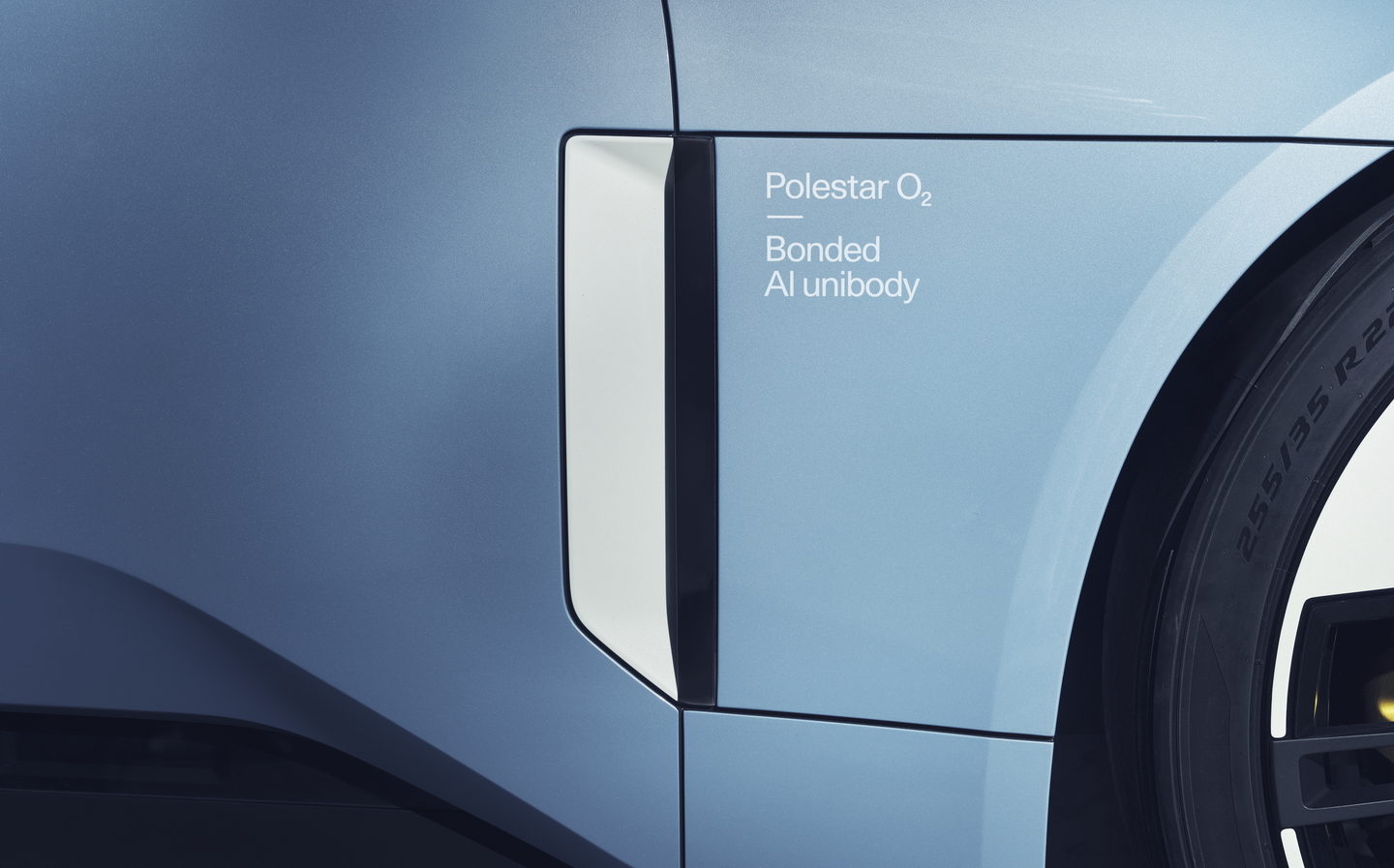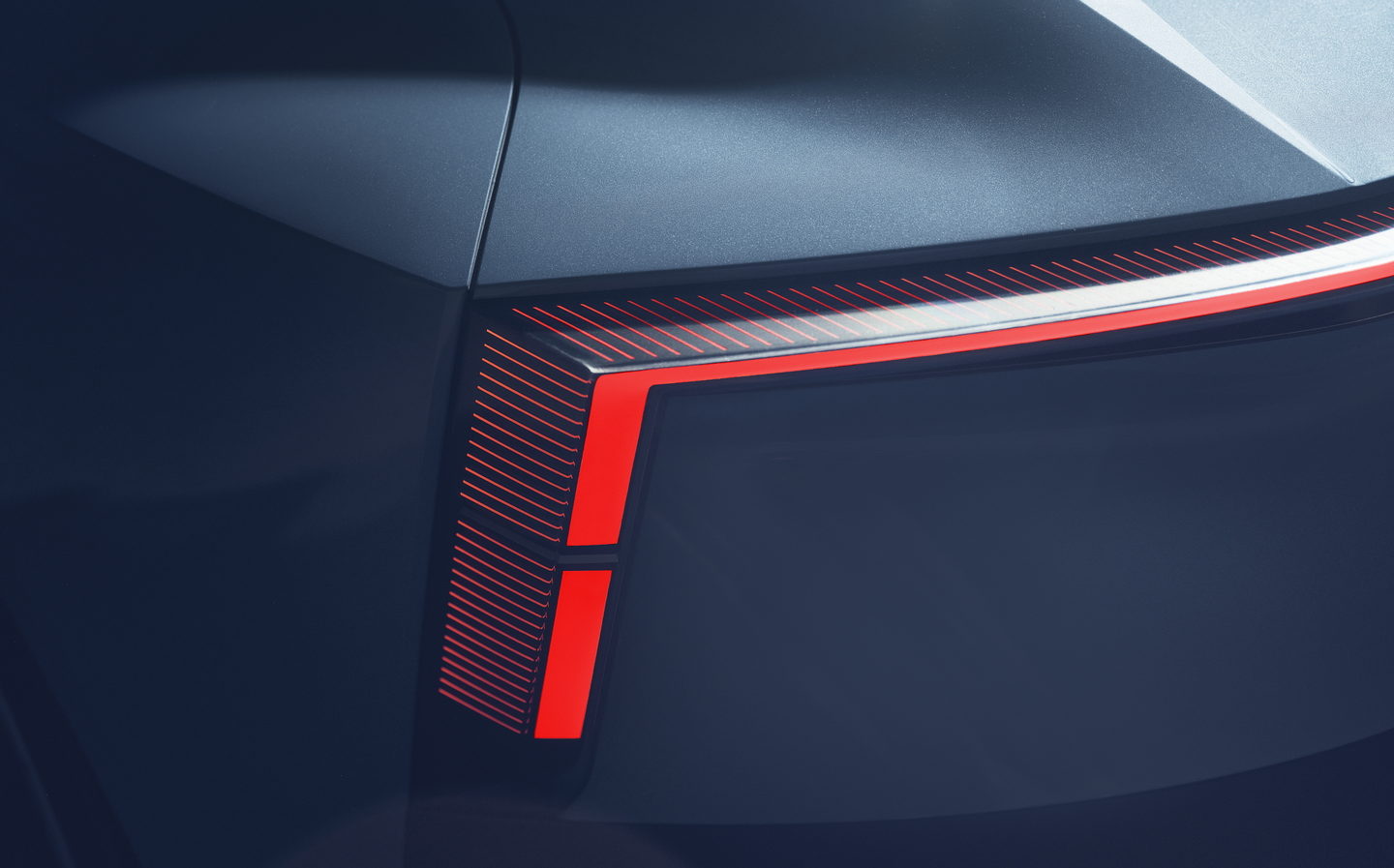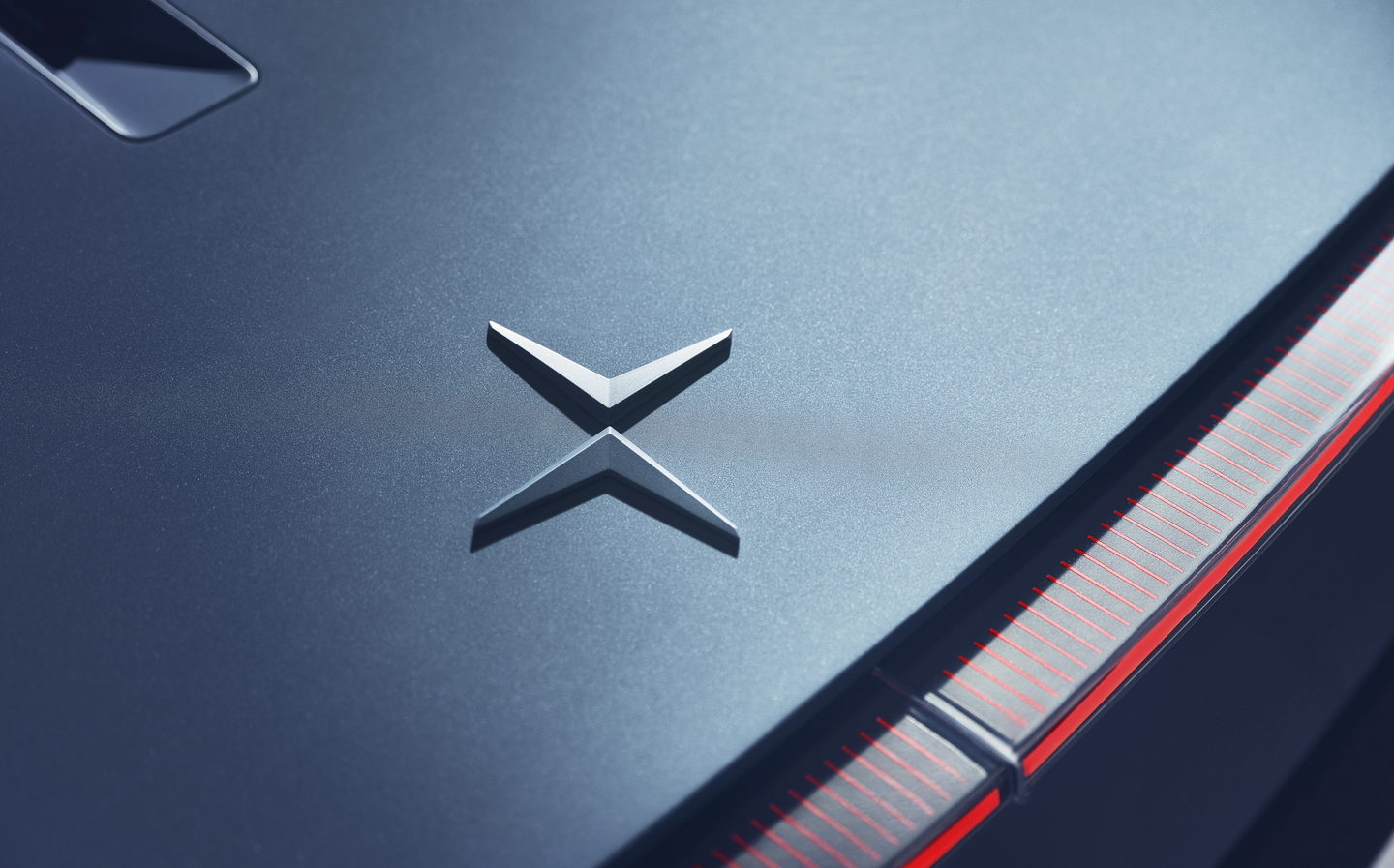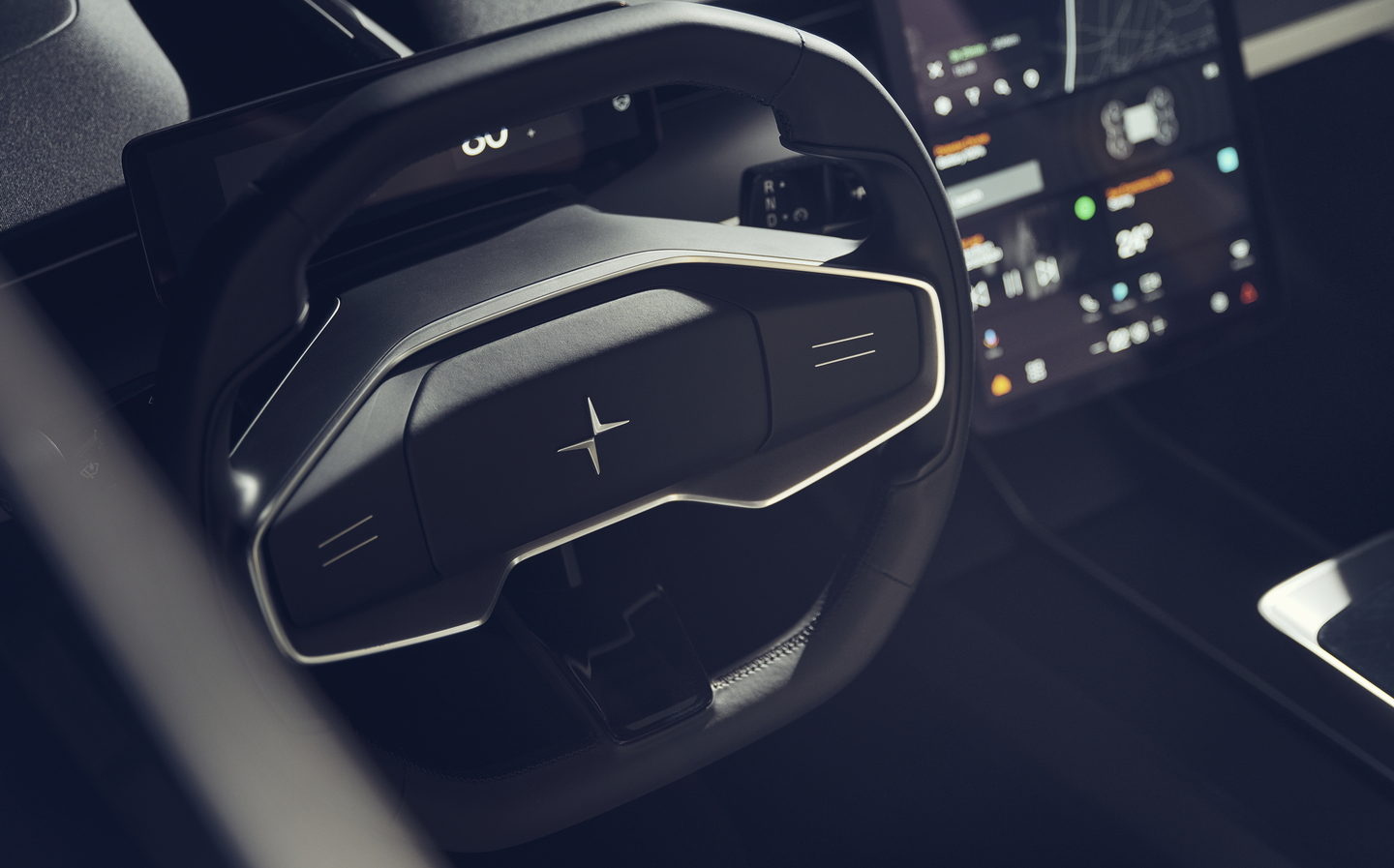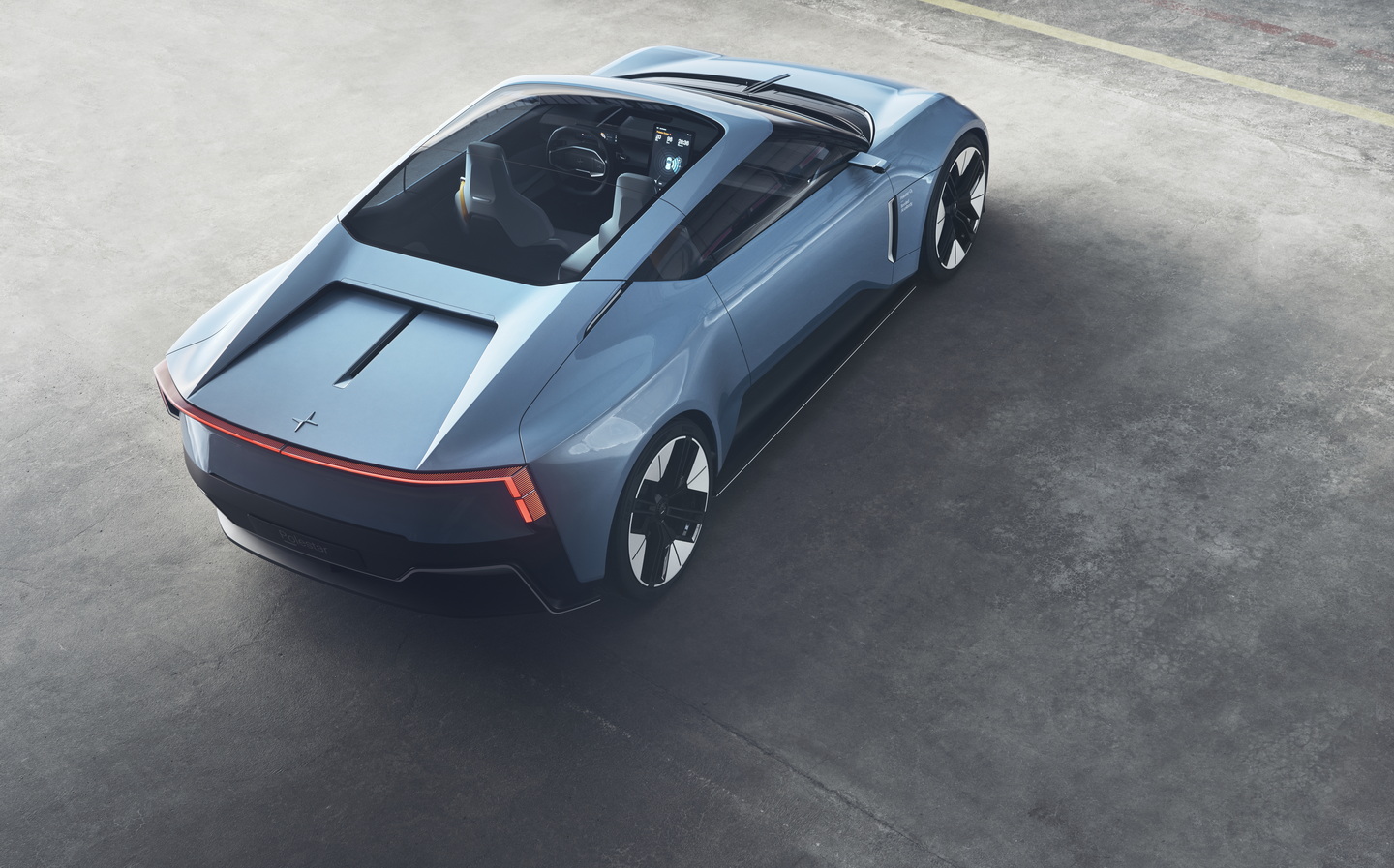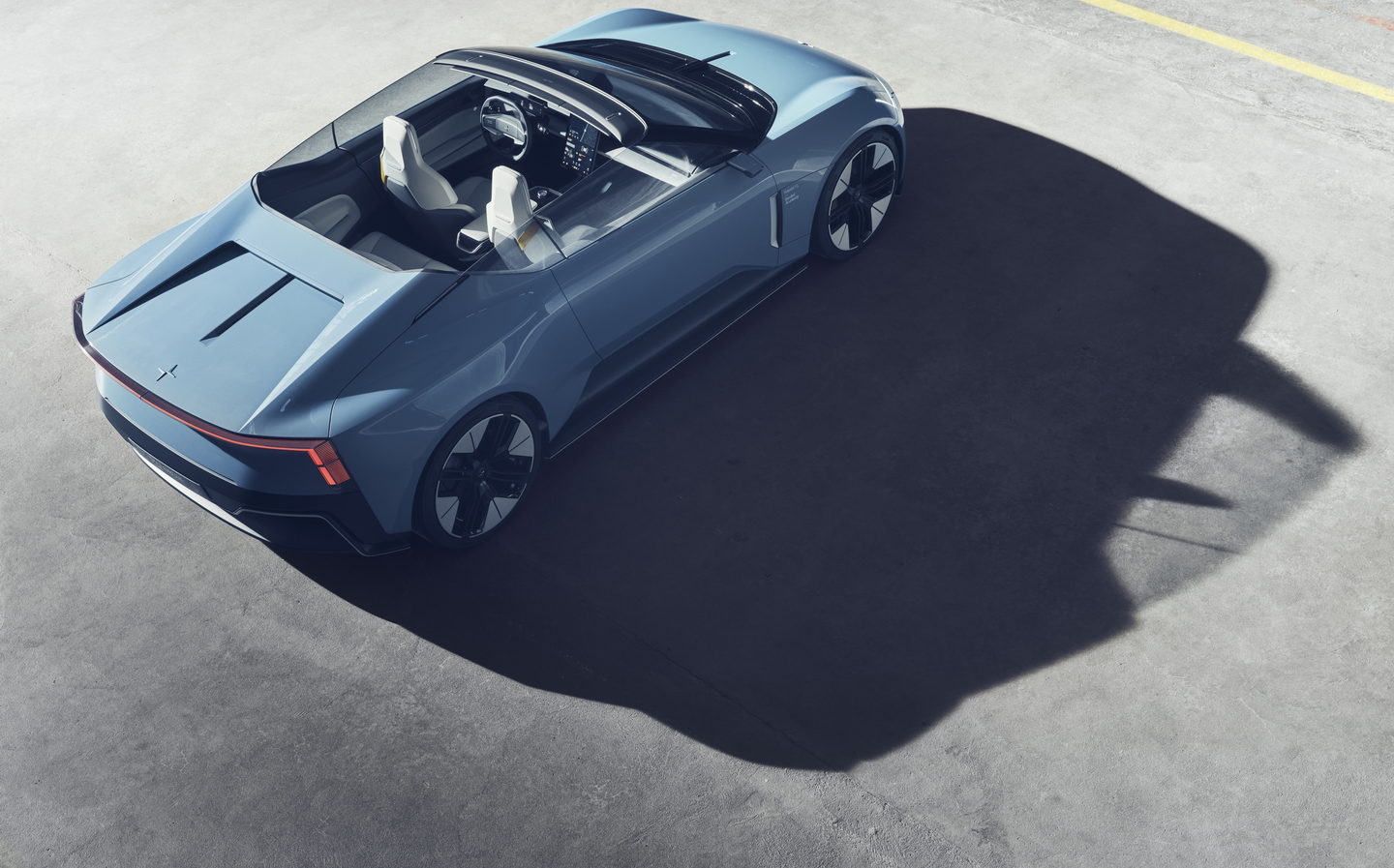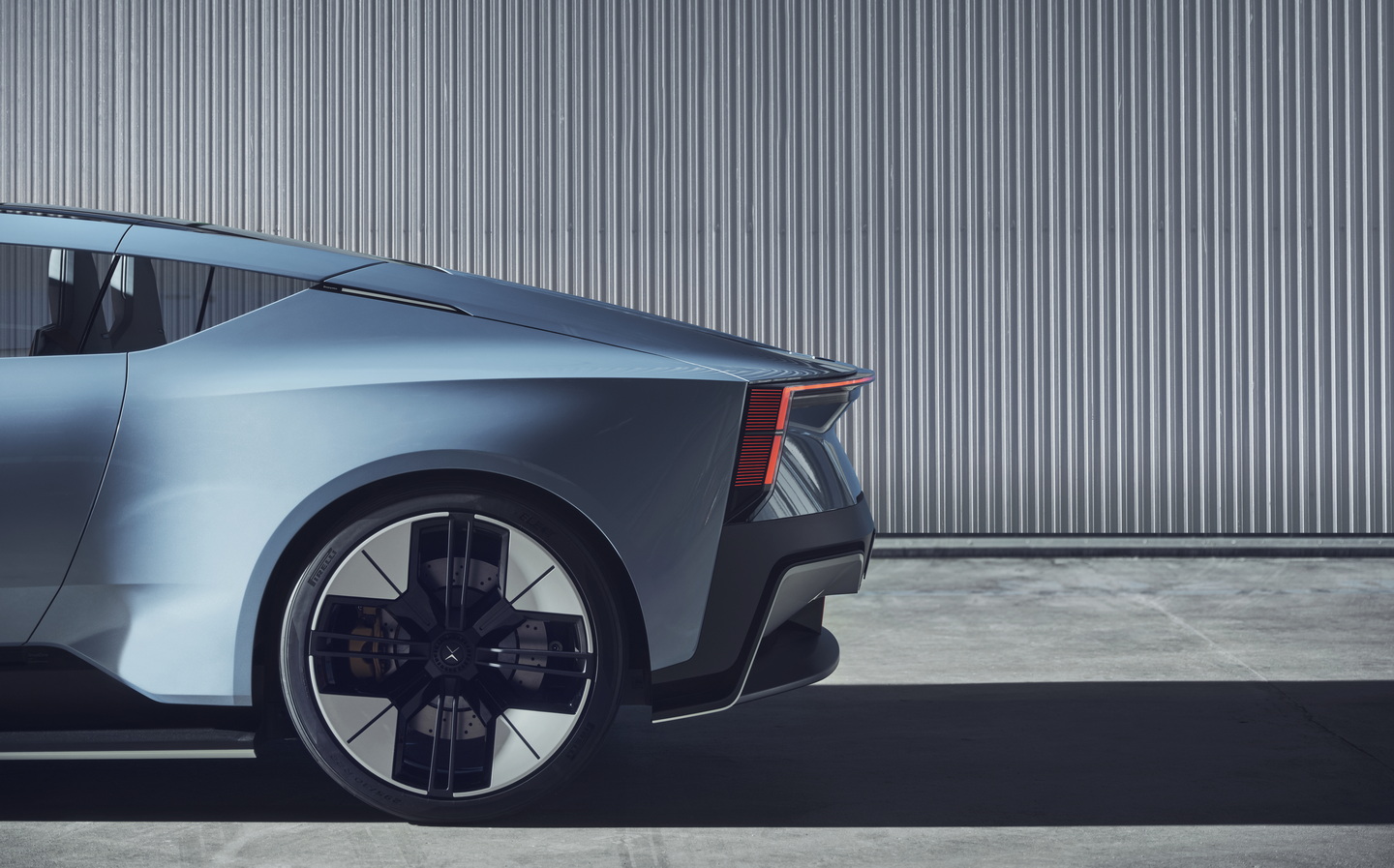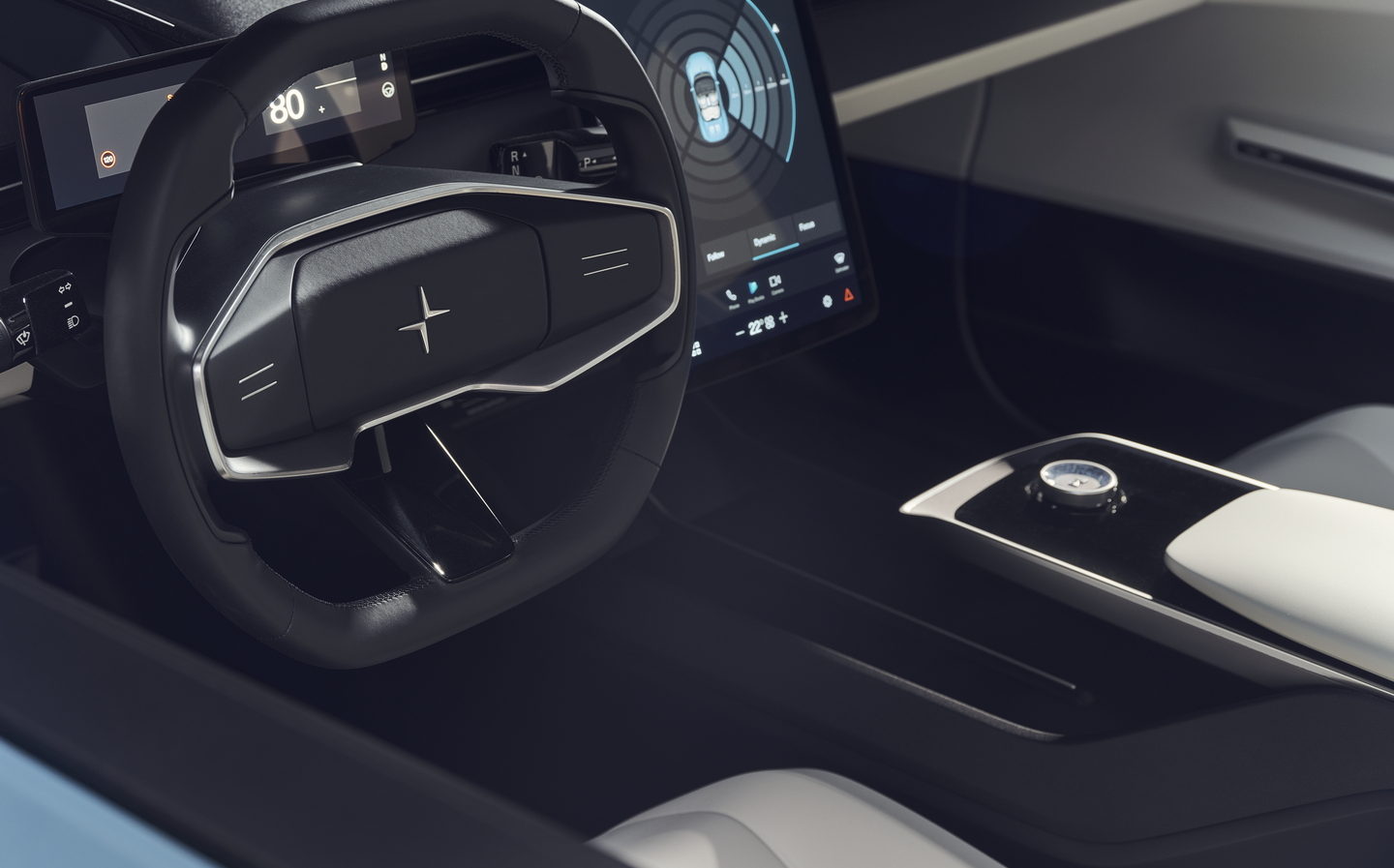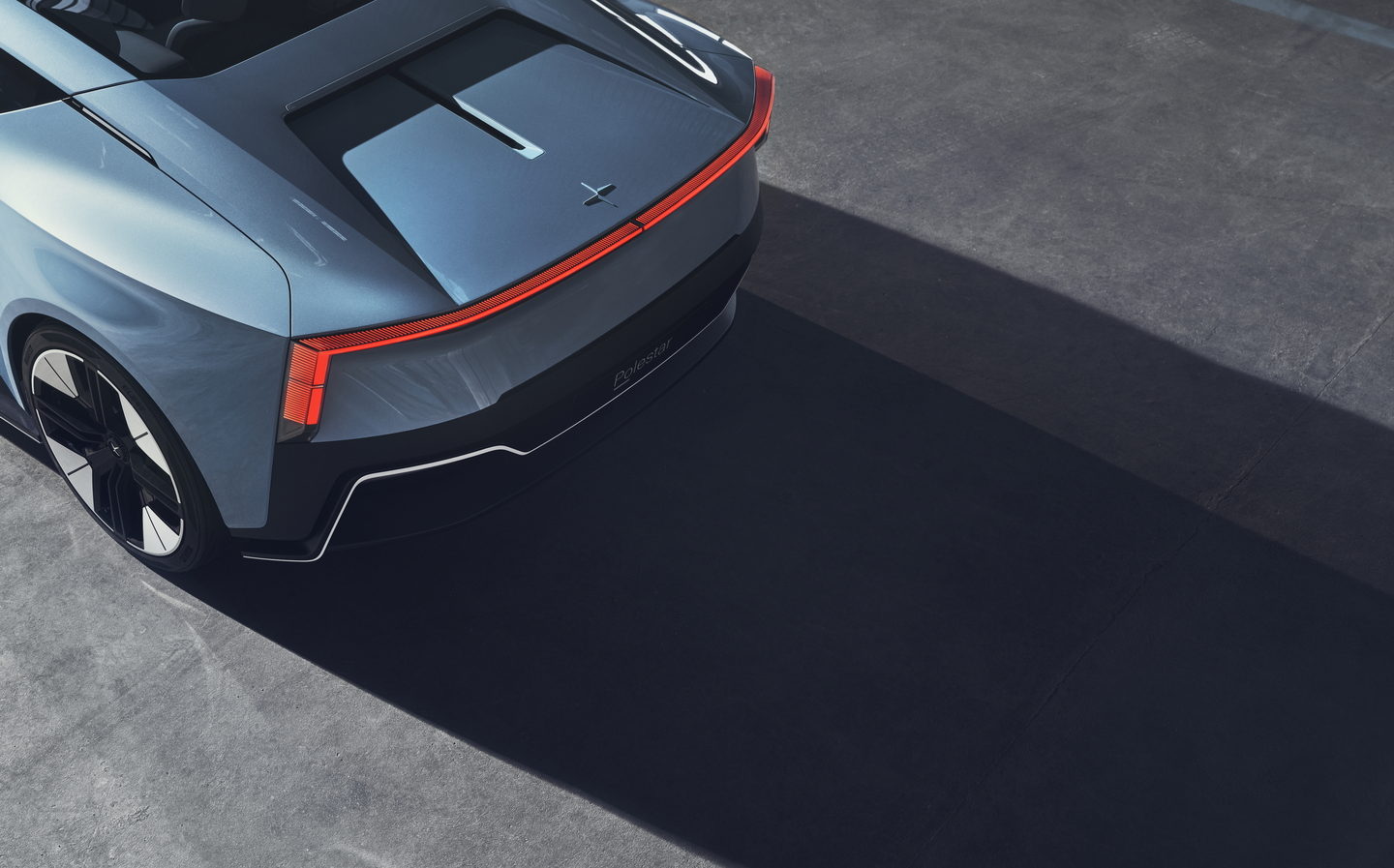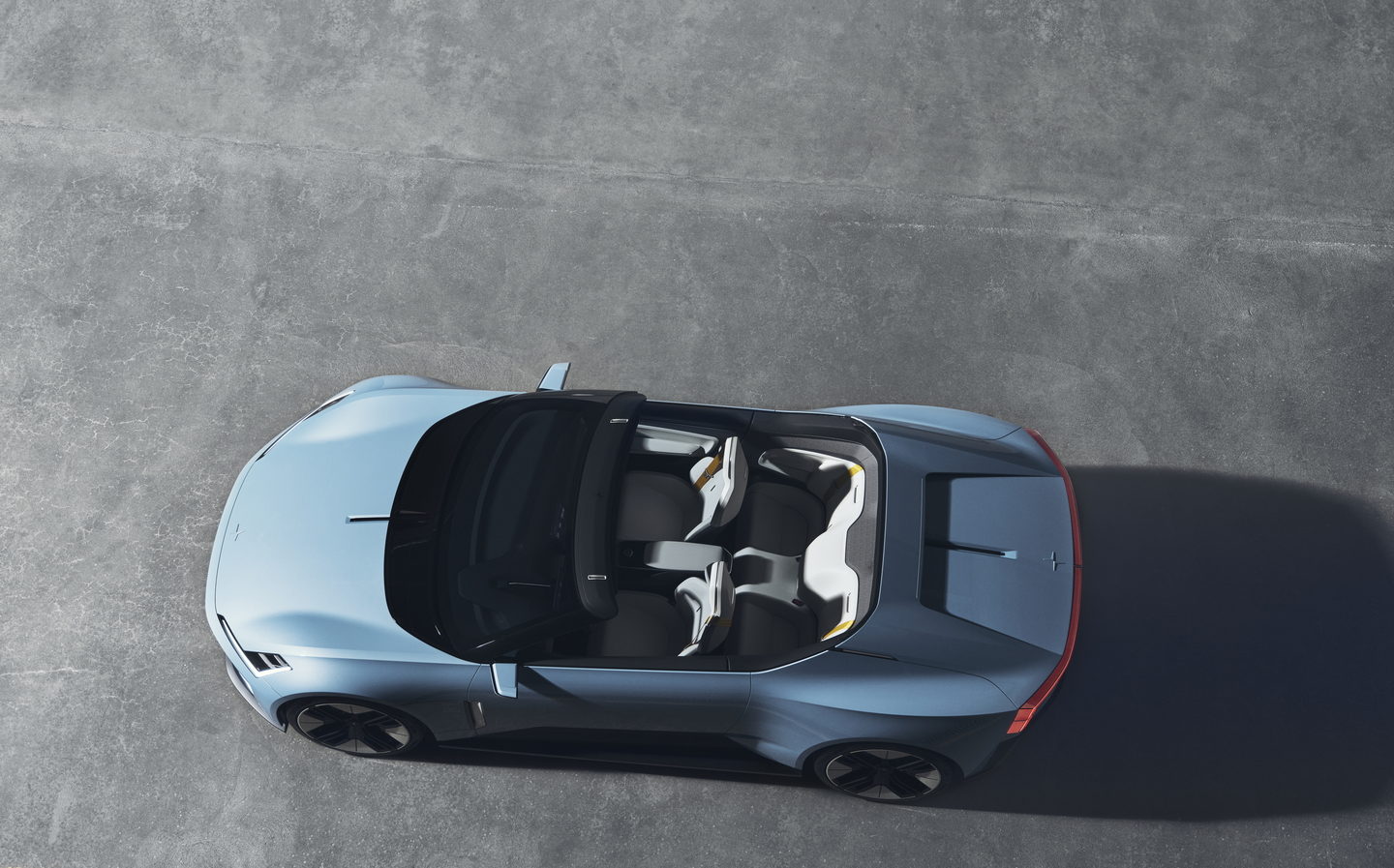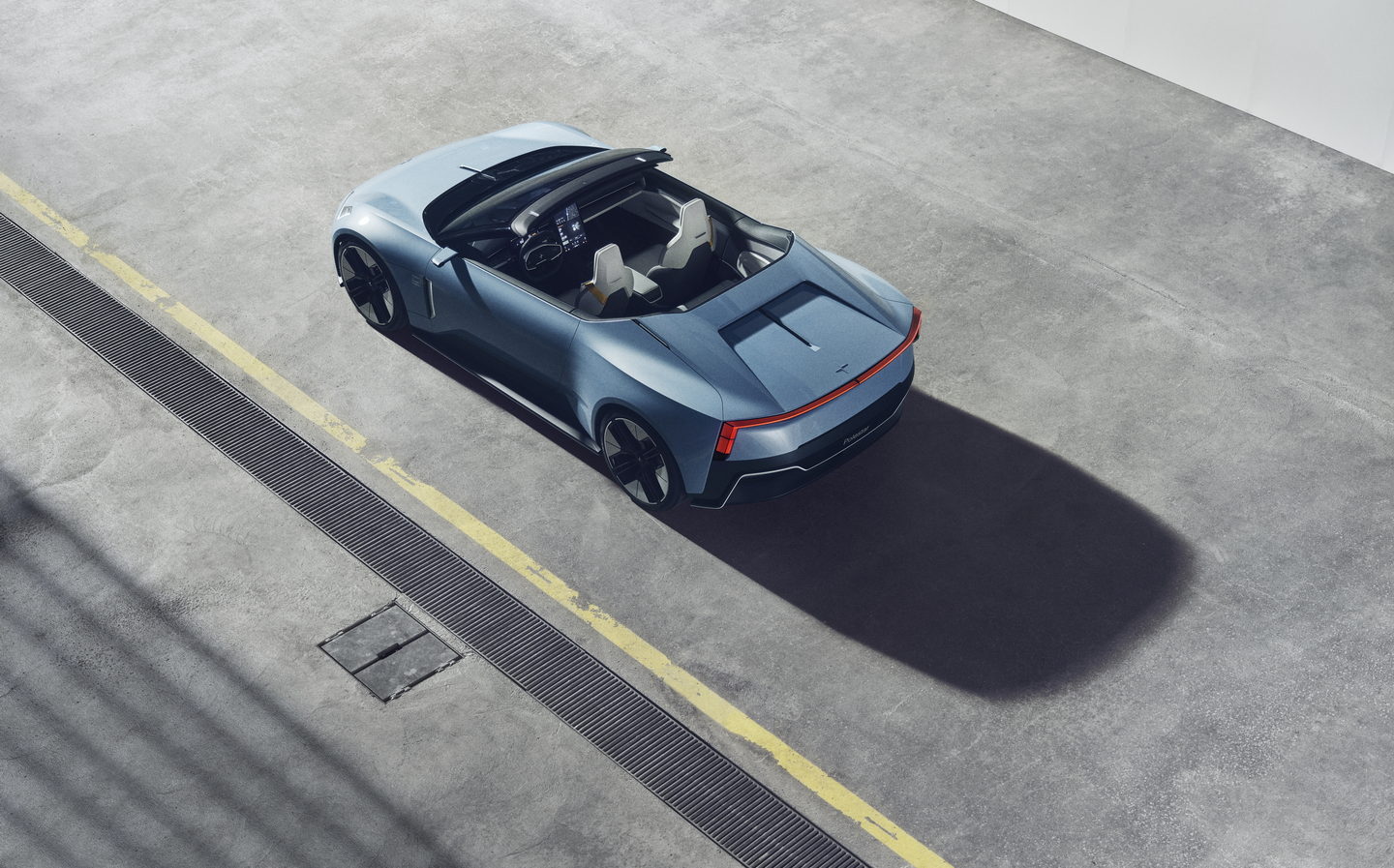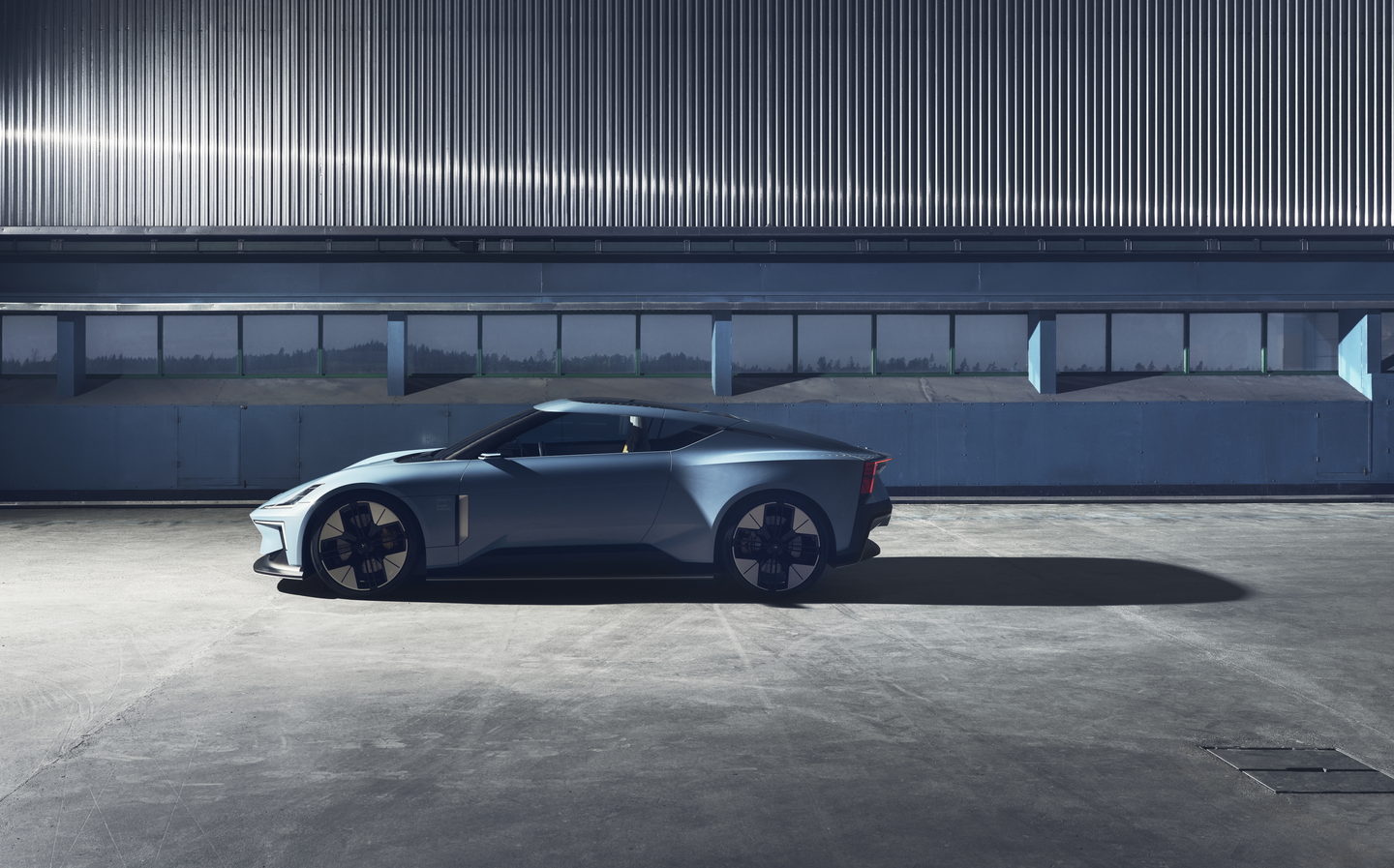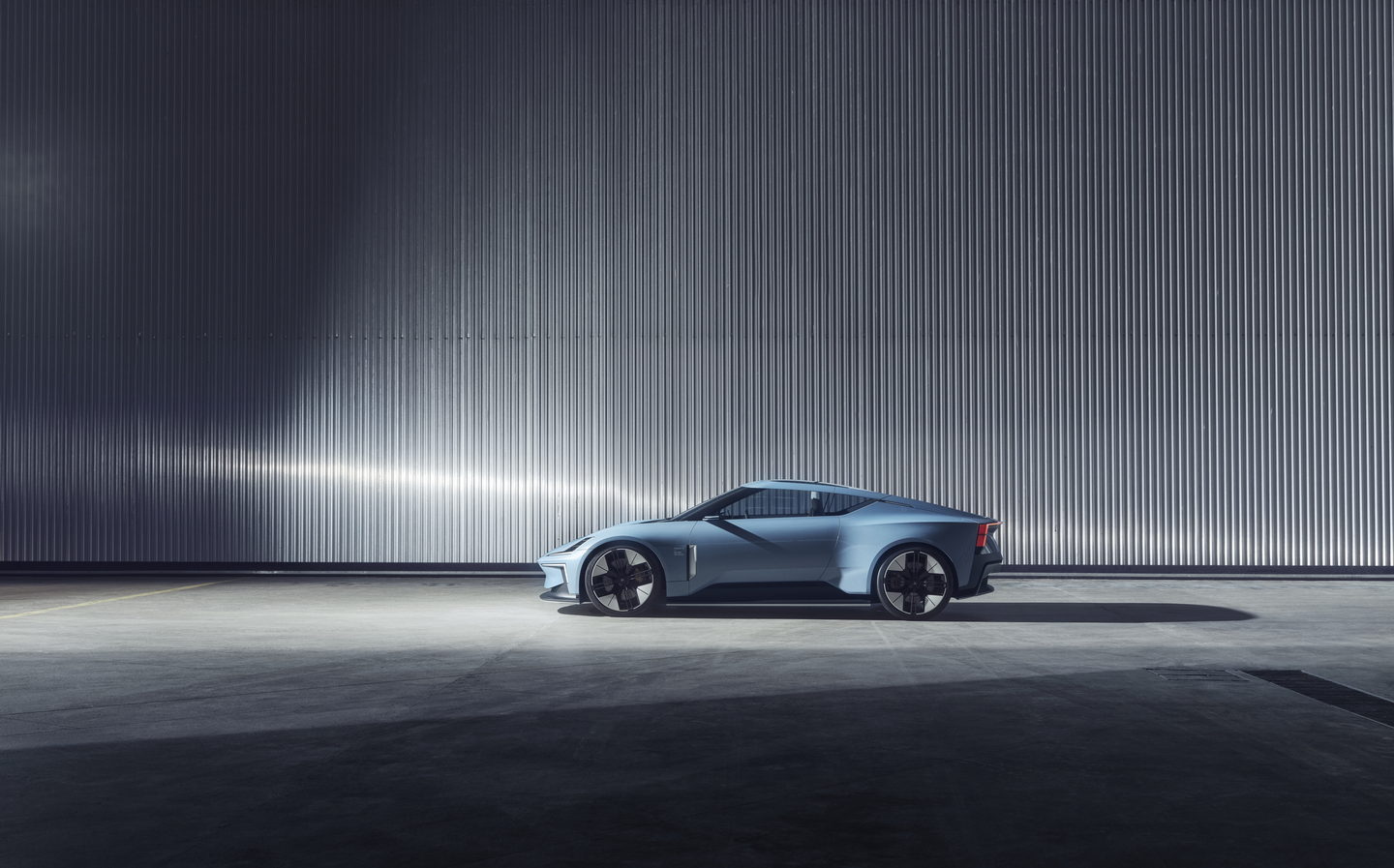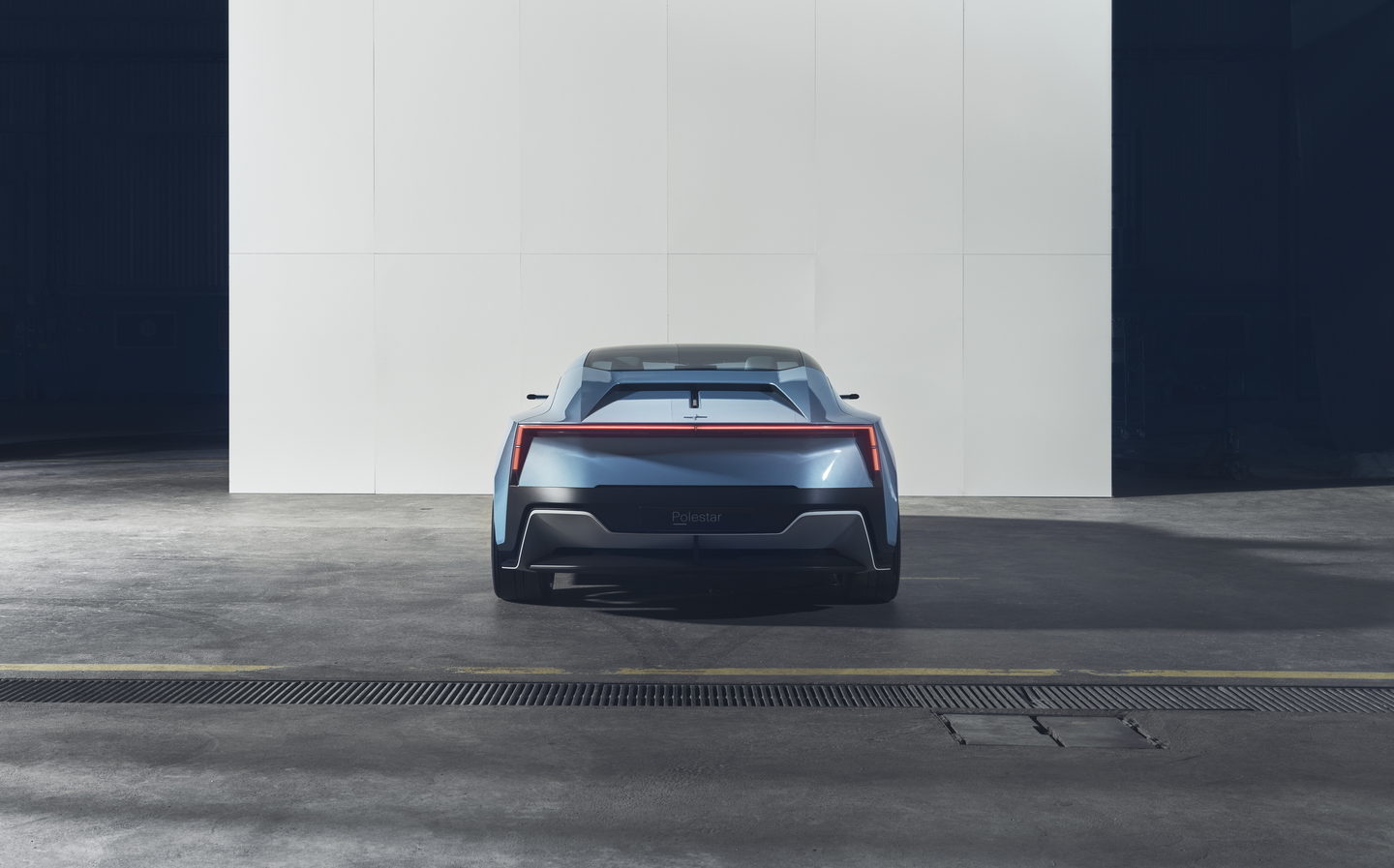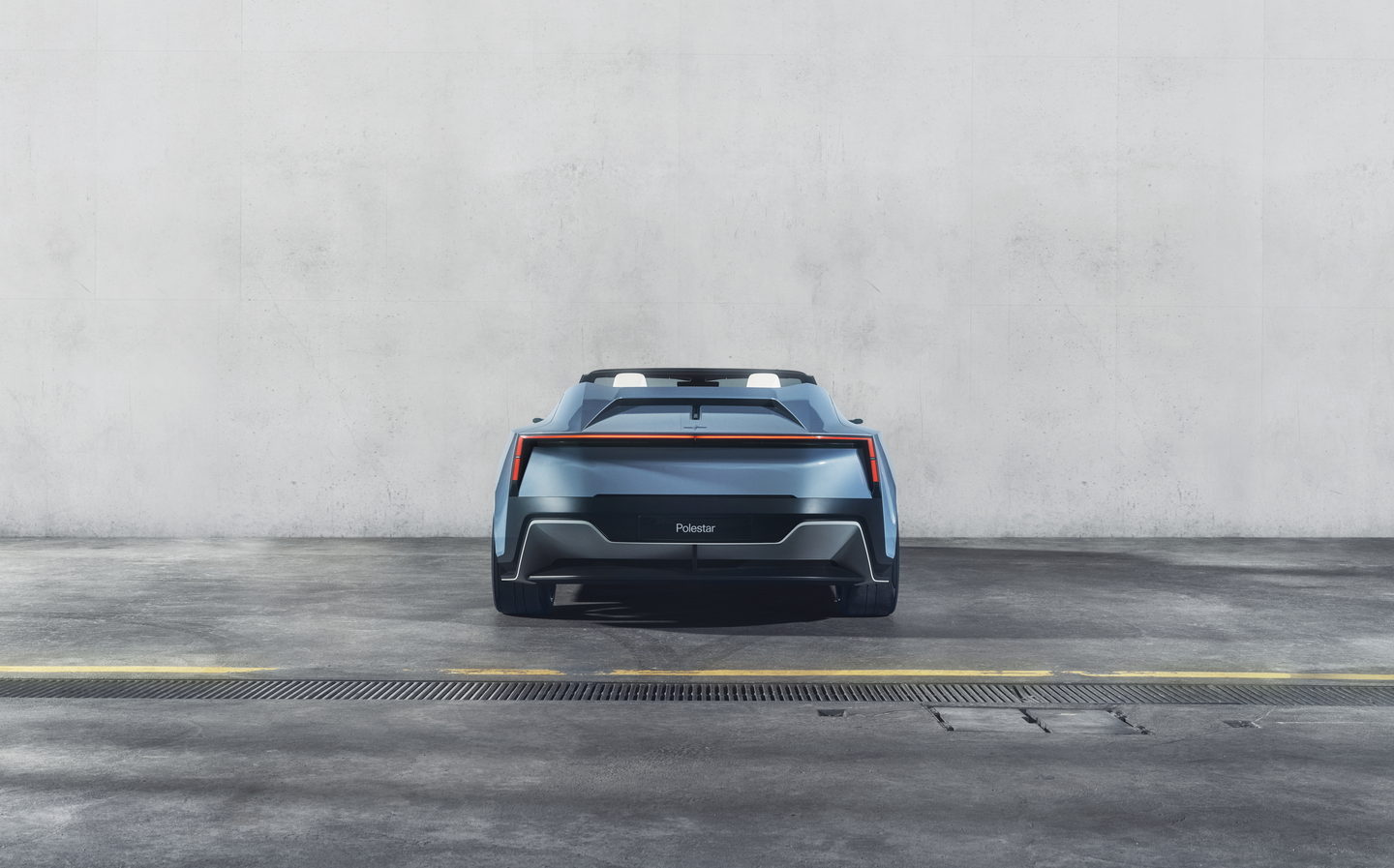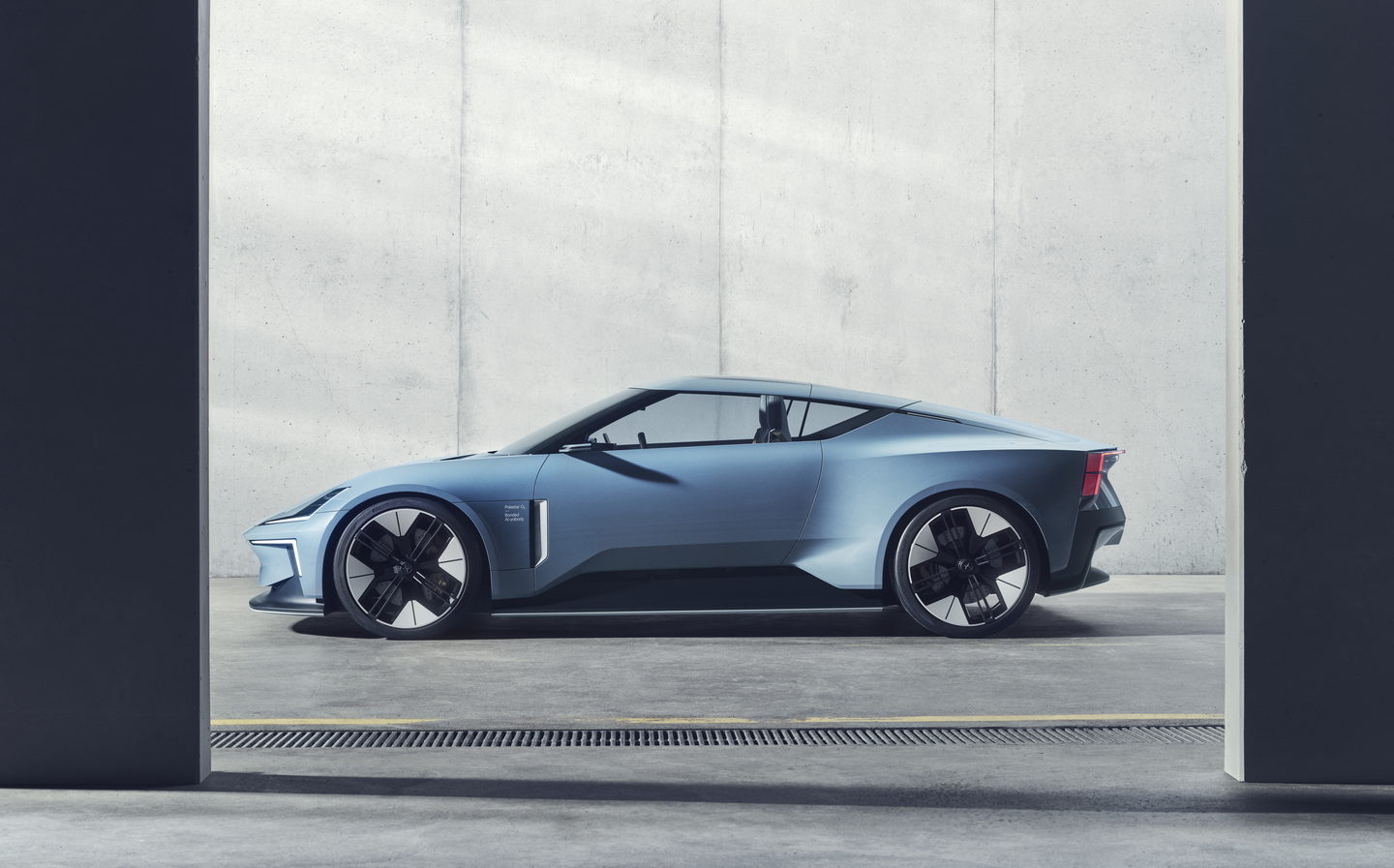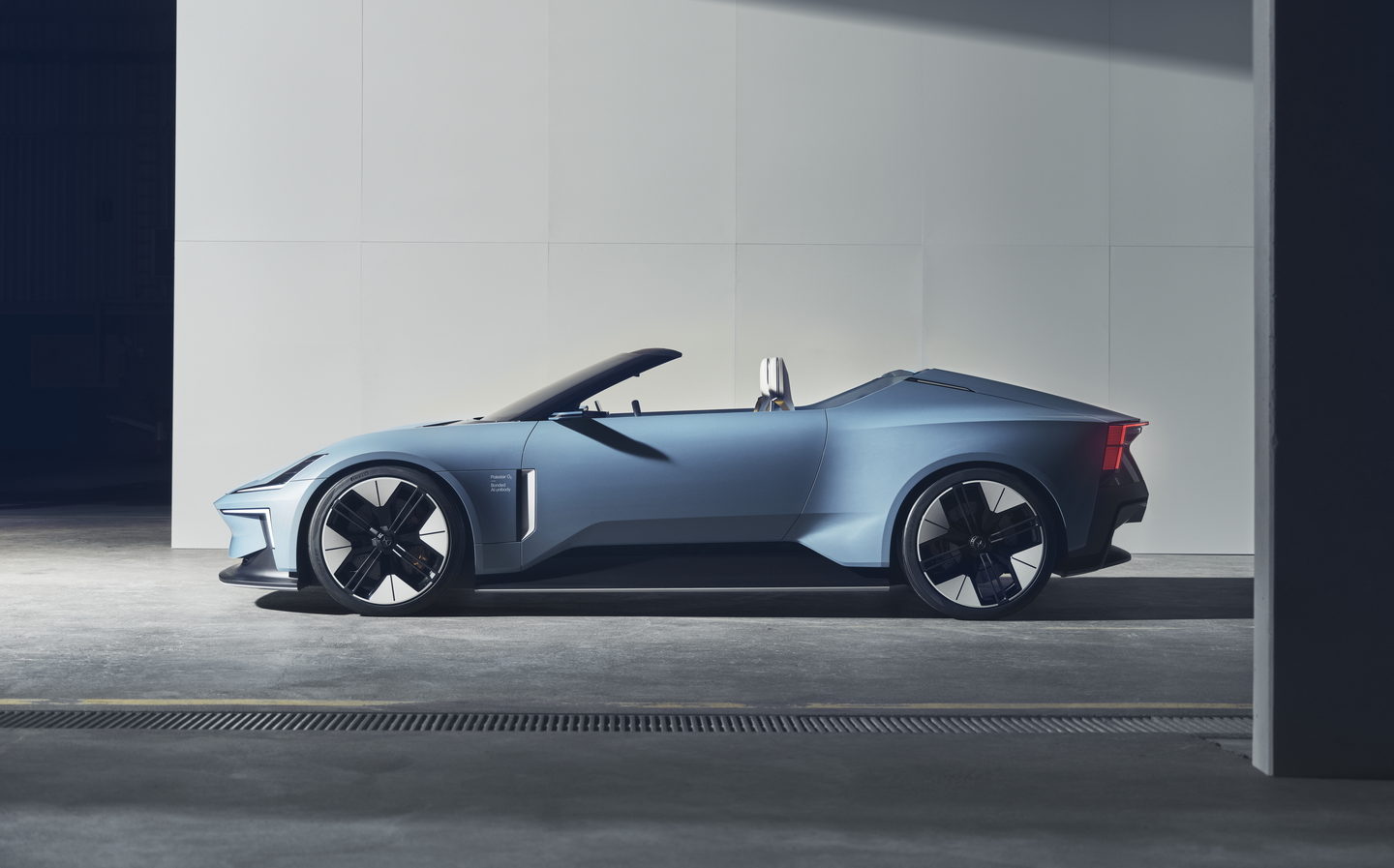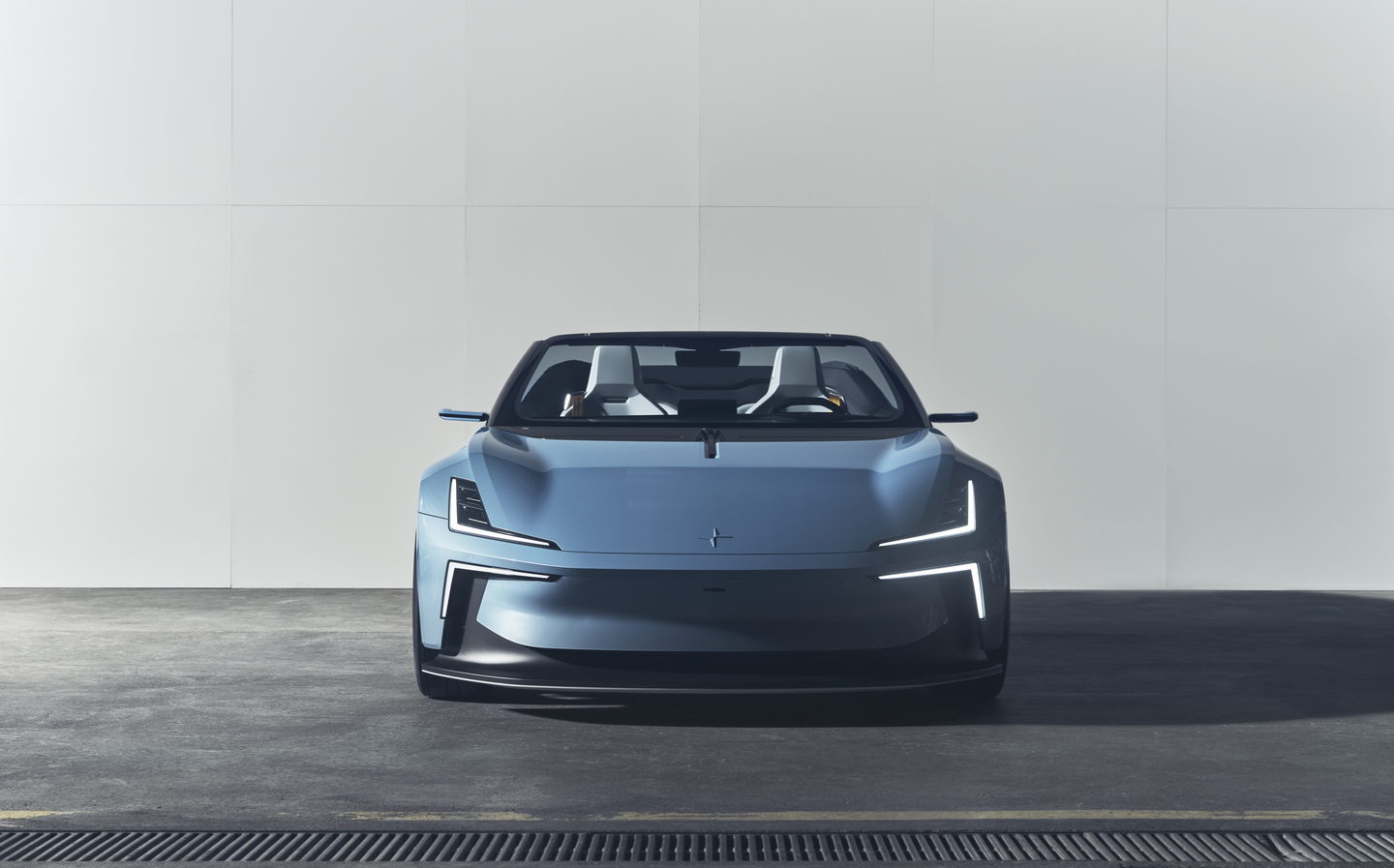Polestar O2 speedster is a stunning droptop electric car concept with attached drone
An electric roadster that may not be pie in the sky, with an eye in the sky
Polestar has unveiled a new roadster concept that is intended to become a “halo car” for the electric car brand, highlighting its design and technological capabilities.
The O2 speedster is based on the design and underpinnings of the Polestar Precept, another one of the company’s concepts that will provide the basis for the Polestar 5 electric saloon set to arrive in 2024.
The latest concept’s overall look shares some familial design traits with the Precept such as the short overhangs, a low, sharp nose and frontal light signature.
Its stance, however, is lower, wider and more muscular, while the shallow-raked roofline tails away towards the rear with buttressing designed to improve the car’s aerodynamic efficiency, reducing wake turbulence for the attached drone (more on that in a moment).
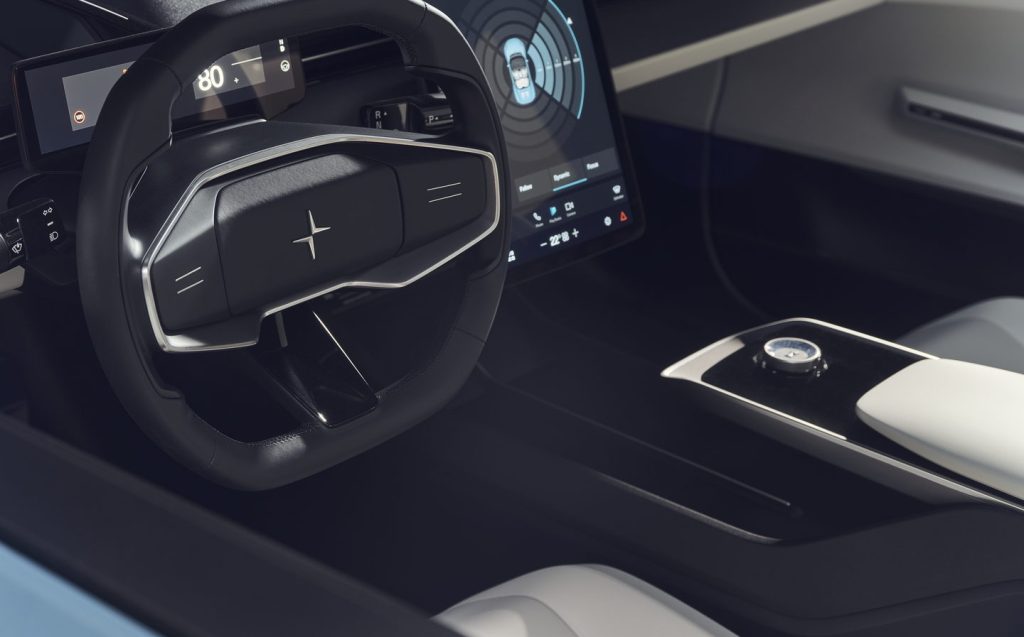
Drag is also reduced thanks to integrated ducting and rear lights functioning as air blades, similarly to those on the Precept.
The driving experience is designed to be “light, lively and full of confidence,” according to Polestar, partially thanks to the bonded aluminium platform developed by car maker’s UK-based R&D team, which will result in an overall weight reduction and, thus, improved handling and driving dynamics.
That use of aluminium is partially because of its lightweight characteristics but also because of its recyclability or “circularity”. The different grades of aluminium used throughout the chassis are carefully labelled enabling them to be more easily recycled.
A single mono-material is used as the base to manufacture the interior thermoplastics, again in the name of circularity, while recycled polyester is used for the soft furnishings.
One of the more eye-catching features of the O2 concept is the autonomous drone integrated behind the rear seats.
The system has been developed in collaboration with Aerofugia (another company, like Polestar and Volvo, under the Geely umbrella) and the car’s designers have devised an aerofoil that raises behind the rear seat to create an area of calm negative pressure allowing the drone to take off while the car is on the move.
Operating autonomously, the drone can follow the car at speeds of up to 56mph, recording the car and its surroundings such as when driving through scenic terrain or through a particularly challenging set of corners, with the aim of creating a video that can then be edited and uploaded to YouTube via the 15in central display — when the car is stopped, presumably.
Commenting on the drone system, Polestar’s head of design, Maximilian Missoni said:
“We wanted to emphasise the experience you can have with a car like the Polestar O2 in new and unusual ways. Integrating an autonomous cinematic drone was something that allowed us to push the boundaries on the innovation front.
“Not needing to stop and off-load the drone before filming, but rather deploying it at speed, is a key benefit to this innovative design.”
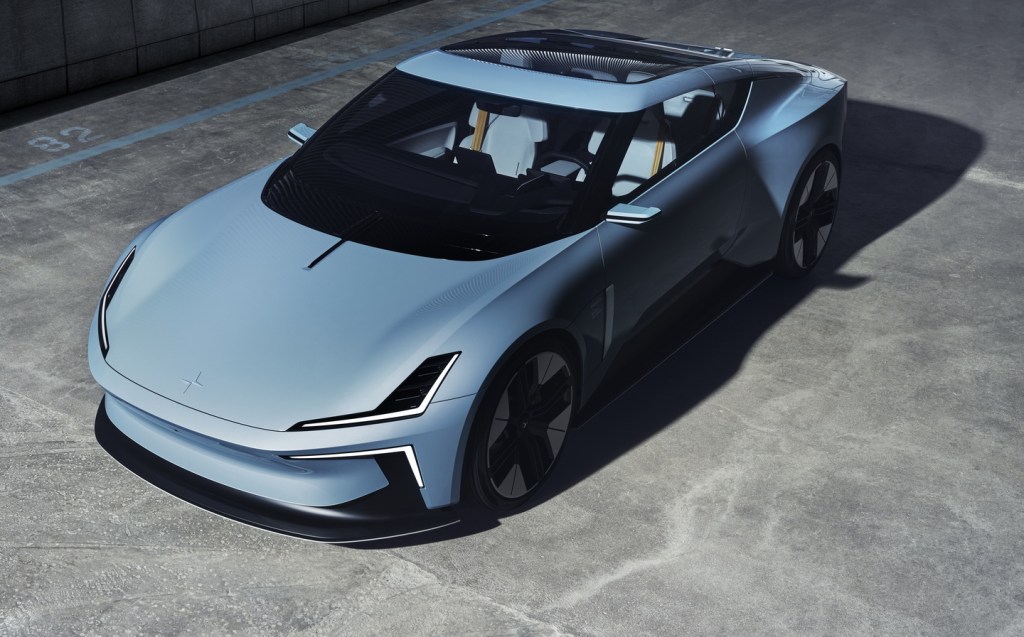
Whether the O2 ever reaches any kind of production stage remains to be seen, but the company plans over the next three year to launch three new models, starting with the Polestar 3 SUV in 2022, the Polestar 4, another, smaller SUV in 2023 and the Precept-based Polestar 5 saloon in 2024.
There are no hints that any convertible Polestar model is actually planned for 2025 or beyond, so it’s possible that the O2 may, sadly, remain a design exercise.
According to the company’s boss, Thomas Ingenlath:
“Polestar O2 is the hero car for our brand. It opens the door to our secret chamber of future potential. This is a taste of what we can design and engineer with the talent and technology we have in-house. It looks incredible, and being able to lower the roof and not hear an engine promises a superb sensation.”
Related articles
- If you liked reading how Polestar unveiled a stunning O2 speedster concept with attached drone, you should check out details, pictures and video of the Polestar Precept concept
- Read Will Dron’s review of the Polestar 2
- Did you hear about the 200 flying taxi hubs that UK start-up Urban-Air plans to open?
Latest articles
- F1 2025 calendar and race reports: The new Formula One season as it happens
- Seven great automotive events to visit this summer, from F1 to art and champagne
- Watch new Porsche 911 GT3 smash Nürburgring record for manual cars
- Skoda Elroq 2025 review: Czech carmaker can’t seem to miss with its electric family cars
- Five best electric cars to buy in 2025


